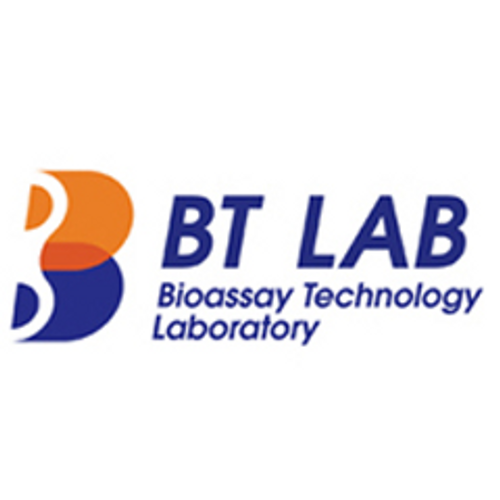Product Description
Human Mothers against decapentaplegic homolog 1 (SMAD1) ELISA Kit | KTE60576 | Abbkine
Application: This Human Mothers against decapentaplegic homolog 1 (SMAD1) ELISA Kit employs a two-site sandwich ELISA to quantitate SMAD1 in samples. An antibody specific for SMAD1 has been pre-coated onto a microplate. Standards and samples are pipetted into the wells and anySMAD1 present is bound by the immobilized antibody. After removing any unbound substances, a biotin-conjugated antibody specific for SMAD1 is added to the wells. After washing, Streptavidin conjugated Horseradish Peroxidase (HRP) is added to the wells. Following a wash to remove any unbound avidin-enzyme reagent, a substrate solution is added to the wells and color develops in proportion to the amount of SMAD1 bound in the initial step. The color development is stopped and the intensity of the color is measured.
Detection Method: Colorimetric
Conjugate: N/A
Sample Type: Cell culture supernatants#Serum#Plasma#Other biological fluids
Assay Type: Multiple steps standard sandwich ELISA assay with a working time of 3-5 hours. It depends on the experience of the operation person.
Kit Component: • Human Mothers against decapentaplegic homolog 1 microplate
• Human Mothers against decapentaplegic homolog 1 standard
• Human Mothers against decapentaplegic homolog 1 detect antibody
• Streptavidin-HRP
• Standard diluent
• Assay buffer
• HRP substrate
• Stop solution
• Wash buffer
• Plate covers
Features & Benefits: Human Mothers against decapentaplegic homolog 1 (SMAD1) ELISA Kit has high sensitivity and excellent specificity for detection of Human SMAD1. No significant cross-reactivity or interference between Human SMAD1 and analogues was observed.
Calibration Range: Please inquire
Limit Of Detection: Please inquire
Usage Note: • Do not mix components from different kit lots or use reagents beyond the kit expiration date.
• Allow all reagents to warm to room temperature for at least 30 minutes before opening.
• Pre-rinse the pipet tip with reagent, use fresh pipet tips for each sample, standard and reagent to avoid contamination.
• Unused wells must be kept desiccated at 4 °C in the sealed bag provided.
• Mix Thoroughly is very important for the result. It is recommended using low frequency oscillator or slight hand shaking every 10 minutes.
• It is recommended that all samples and standards be assayed in duplicate or triplicate.
Storage Instruction: The unopened kit should be stored at 2 - 8°C. After opening, please store refer to protocols.
Shipping: Gel pack with blue ice.
Precaution The product listed herein is for research use only and is not intended for use in human or clinical diagnosis. Suggested applications of our products are not recommendations to use our products in violation of any patent or as a license. We cannot be responsible for patent infringements or other violations that may occur with the use of this product.
Background: Glycyl-tRNA synthetase isone of the aminoacyl-tRNA synthetases that charge tRNAs with their cognate amino acids. The encoded enzyme is an (alpha) 2 dimer which belongs to the class II family of tRNA synthetases. It has been shown to be a target of autoantibodies in the human autoimmune diseases, polymyositis or dermatomyositis.Defects in GARS are the cause of distal spinal muscular atrophy type V (DSMA-V) . DSMA-V is an autosomal dominant distal hereditary motor neuropathy (dHMN) with a phenotype similar to CMTD2. The main characteristic that distinguishes these disorders is the less severe distal sensory involvement in DSMA-V patients.Defects in GARS are the cause of Charcot-Marie-Tooth disease type 2D (CMT2D)
Alternative Names: SMAD1; BSP1; JV4-1; JV41; MADH1; MADR1; MAD; mothers against decapentaplegic homolog 1; Mad-related protein 1; SMAD; mothers against DPP homolog 1; Sma- and Mad-related protein 1; TGF-beta signaling protein 1;
Search name: SMAD1; BSP1; JV4-1; JV41; MADH1; MADR1; MAD; mothers against decapentaplegic homolog 1; Mad-related protein 1; SMAD; mothers against DPP homolog 1; Sma- and Mad-related protein 1; TGF-beta signaling protein 1;
Tag: SMAD1
 Euro
Euro
 USD
USD
 British Pound
British Pound
 NULL
NULL








